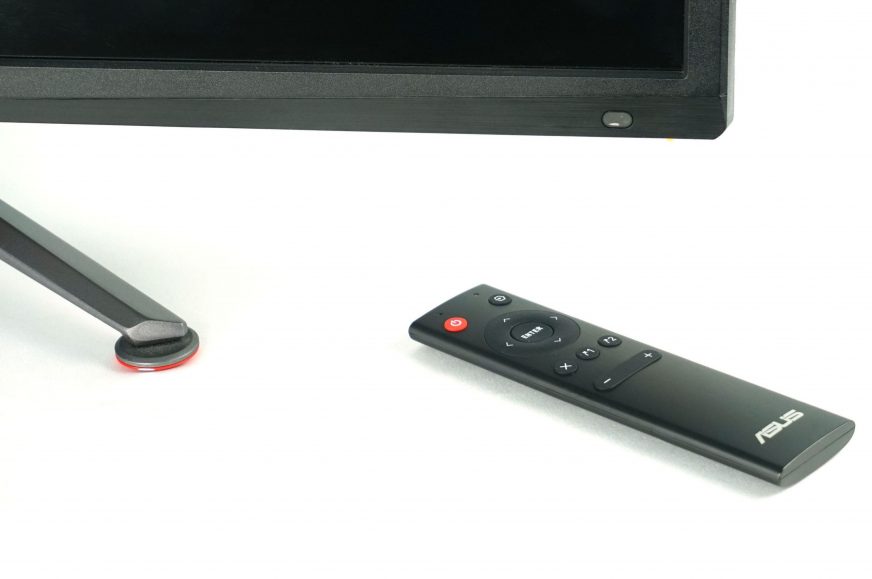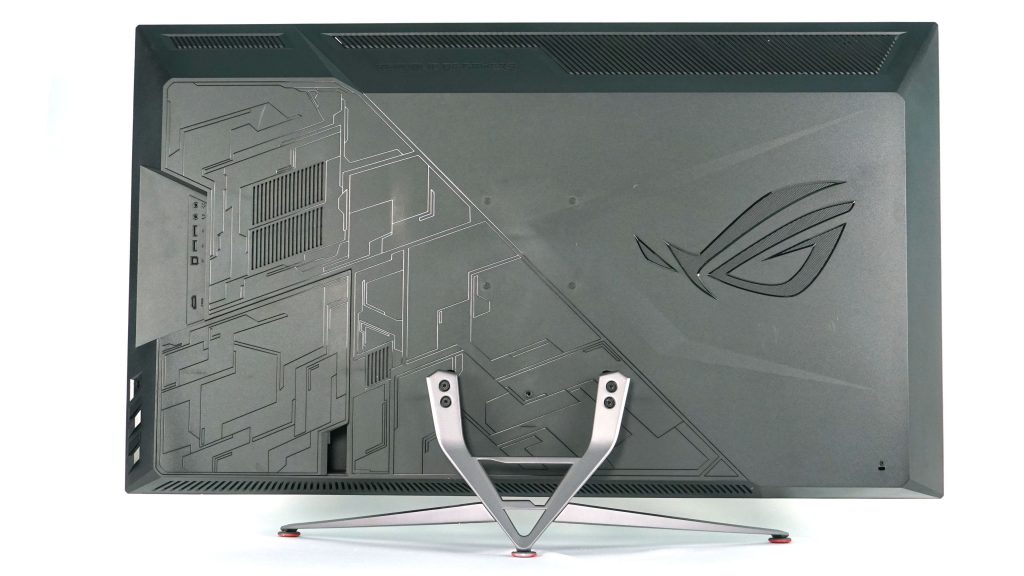Conclusion
4K monitors are no longer unusual today. However, when labels like 120 Hz, HDR or FreeSync complement 4K, more than one player will start paying attention. I consider the ROG Strix XG438Q to be one of the most interesting gaming monitors on the market, as it has long been on my personal watchlist, too. Let’s take a look at this oversized breathtaking gaming display.
Conclusion
Asus ROG Strix XG438Q is a gigantic gaming monitor that draws you into the action and provides a really good gaming experience. It’s done thanks to a high resolution, 120 Hz refresh rate in combination with FreeSync/G-Sync for smooth motion and also HDR support at a slightly higher level than conventional monitors. In addition to gaming, the monitor will also be good for work thanks to surprisingly good color reproduction and decent port selection or PbP, PiP and MultiFrame functions for advanced multitasking.
HDR content is a bit better than usual thanks to the backlit zones, but on the contrary, when displaying black, the effect of switching on the individual zones is strongly visible, which has a particularly disturbing effect on me. You will still need an OLED/miniLED panel for a full HDR experience.
The second negative is the relatively high price of the monitor, although we are still not at the very top of the monitor market. The price of around 1,100 euros really belongs to the highest range we’ve had for a test, and for this money the customer certainly expects the best. As I mentioned, I’ve also been dealing with this dilemma and the XG438Q was promising to become my next monitor.
I was especially attracted to its pro-computer orientation thanks to DisplayPort, USB hub and FreeSync/G-Sync, but in the end I reached for a 55″ OLED from LG, which primarily serves as a TV though, but thanks to HDMI 2.1 and support from Nvidia also offers an ideal connection to a PC thanks to G-Sync. The main factor for buying an OLED in addition to picture quality and HDR was the price, which a year ago was lower than the current price tag of the XG438Q, and that was something I could not overcome. Of course, these were my personal preferences, but the fact that the XG438Q managed to be one of the two real candidates for my upgrade I consider a success and definitely a compliment for this monitor.
| Asus ROG Strix XG438Q |
| + large diagonal for better immersion |
| + good color reproduction even in the default mode |
| + high brightness |
| + 4K 120 Hz with FreeSync and G-Sync Compatible |
| + up to 4 inputs and wide multitasking possibilities |
| + button controls + joystick, remote control, application |
| + fairly loud speakers |
| - high price |
| - The edge-lit backlight has few zones and creates unwanted glow on a black background |
You can buy the monitor at our partner’s website czc.cz for 27,609 Czk/1,050 Eur












